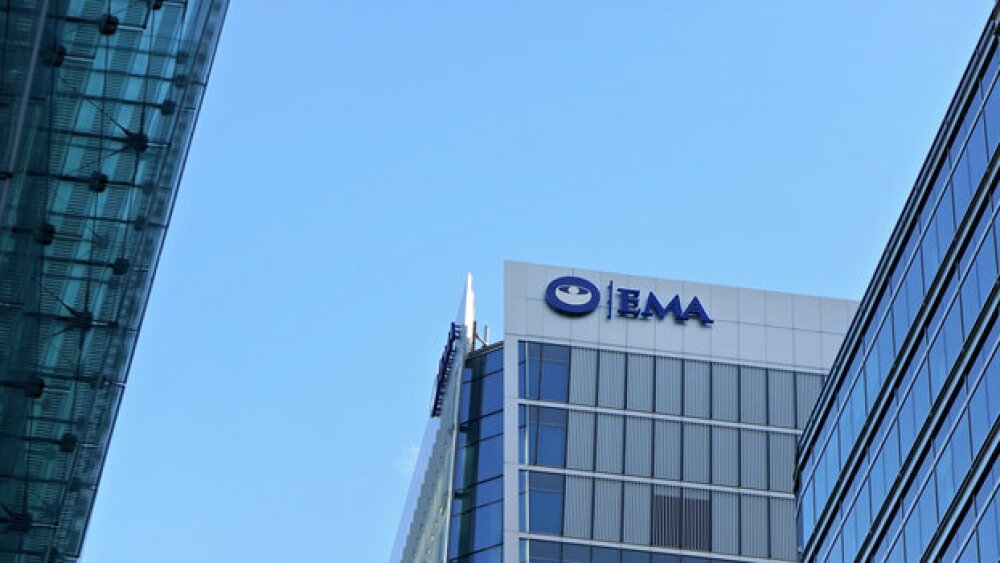Calliditas Therapeutics AB today announced the presentations of an additional efficacy analysis of Nefecon (TARPEYO ® (budesonide) delayed release capsules)) as well as a real-world analysis of the use of systemic glucocorticoids (SGC) in IgA nephropathy (IgAN).
| STOCKHOLM, May 28, 2024 /PRNewswire/ -- Calliditas Therapeutics (Formerly known as Pharmalink) AB (Nasdaq: CALT) (Nasdaq Stockholm: CALTX) (“Calliditas”), today announced the presentations of an additional efficacy analysis of Nefecon (TARPEYO® (budesonide) delayed release capsules)) as well as a real-world analysis of the use of systemic glucocorticoids (SGC) in IgA nephropathy (IgAN). These were presented at ERA 2024 virtually and in Stockholm on May 23 - 26, 2024. The presented efficacy analysis of Nefecon and sparsentan showed that treatment with Nefecon for 9 months was associated with estimated glomerular filtration rate (eGFR) benefit compared with continuous treatment with sparsentan. Additionally, the findings of a real-world analysis of challenges associated with the use of systemic glucocorticoids demonstrate significant side effects and costs for IgAN patients treated with systemic glucocorticoids (SGC), such as Prednisone and Prednisolone. “It was wonderful to participate in ERA 2024 and present data contributing to the discussion on the need for effective treatments in IgAN,” said Richard Philipson, Chief Medical Officer of Calliditas, " We continue to gather evidence that highlights the importance of treating the underlying autoimmune pathogenesis associated with IgAN, and we believe TARPEYO, as the only approved immunomodulating therapy designed to target the production of Gd-IgA1, has the potential to become a cornerstone therapy in IgAN.” Poster presentation details are below and will be available on the Presentations and Publications page on the Calliditas’ corporate website following the meeting. Presentation Analyses: Title: “Matching-adjusted indirect comparison of eGFR in patients with immunoglobulin A nephropathy treated with Nefecon (TRF budesonide) or sparsentan” A matching-adjusted indirect comparison (MAIC) methodology is a widely accepted and relevant methodology for comparing treatments across trials in the absence of head-to-head comparisons. Here the effects of Nefecon, marketed as TARPEYO® and sparsentan, marketed as FILSPARI™, on kidney function deterioration in patients with IgAN were compared, as assessed by eGFR change from baseline at 9, 12 and 24 months. Results from the MAIC showed significantly favorable effects of Nefecon versus sparsentan on eGFR across all time points analyzed. Mean differences in the absolute change in eGFR of 5.68mL/min/1.73 m2 (95% credible interval [Crl] 3.14, 8.20; p<0.001), 3.48 mL/min/1.73 m2 (95% Crl 0.97, 5.97; p=0.006) and 3.28 mL/min/1.73 m2 (95% Crl 0.02, 6.51; p=0.048) were observed when comparing Nefecon with sparsentan at 9 months vs 36 weeks, 12 months vs 48 weeks, and 24 months vs 106 weeks, respectively. This efficacy analysis showed that treatment with Nefecon 16 mg/day for 9 months was associated with greater eGFR benefit compared with continuous treatment with sparsentan 400 mg/day over 2 years, with significant differences observed as early as 9 months after treatment initiation and sustained up to 2-years of follow-up. While the rigor of well-controlled head-to-head clinical trials cannot be replicated, MAIC is also a widely accepted and relevant methodology for comparing treatments across trials in the absence of head-to-head comparisons1,2, *. Title: “Real-world challenges associated with the use of systemic glucocorticoids in a US IgAN cohort” Per Kidney Disease: Improving Global Outcomes (KDIGO) guidelines, patients at high risk of progressive chronic kidney disease despite maximal supportive care can be considered for a 6-month course of systemic glucocorticoids (SGC), although important risks of toxicity and contraindications must be considered. There is currently limited real-world evidence describing the impact of the use of SGC on treatment-emergent toxicity and healthcare resource utilization (HCRU) in patients with IgAN. Our findings demonstrate significant side effects and costs for IgAN patients treated with SGC compared with patients not treated with SGC. Increases in severe infection incidents, inpatient visits, emergency department admissions, and ambulatory visits, underscore the careful consideration of treatment-emergent toxicity prior to initiating SGC therapy in patients with IgAN.
Indication TARPEYO is indicated to reduce the loss of kidney function in adults with primary immunoglobulin A nephropathy (IgAN) who are at risk for disease progression. Important Safety Information Contraindications: TARPEYO is contraindicated in patients with hypersensitivity to budesonide or any of the ingredients of TARPEYO. Serious hypersensitivity reactions, including anaphylaxis, have occurred with other budesonide formulations. Warnings and Precautions Hypercorticism and adrenal axis suppression: When corticosteroids are used chronically, systemic effects such as hypercorticism and adrenal suppression may occur. Corticosteroids can reduce the response of the hypothalamus-pituitary-adrenal (HPA) axis to stress. In situations where patients are subject to surgery or other stress situations, supplementation with a systemic corticosteroid is recommended. When discontinuing therapy or switching between corticosteroids, monitor for signs of adrenal axis suppression. Patients with moderate to severe hepatic impairment (Child-Pugh Class B and C respectively) could be at an increased risk of hypercorticism and adrenal axis suppression due to an increased systemic exposure to oral budesonide. Avoid use in patients with severe hepatic impairment (Child-Pugh Class C). Monitor for increased signs and/or symptoms of hypercorticism in patients with moderate hepatic impairment (Child-Pugh Class B). Risks of immunosuppression: Patients who are on drugs that suppress the immune system are more susceptible to infection than healthy individuals. Chickenpox and measles, for example, can have a more serious or even fatal course in susceptible patients or patients on immunosuppressive doses of corticosteroids. Avoid corticosteroid therapy in patients with active or quiescent tuberculosis infection; untreated fungal, bacterial, systemic viral, or parasitic infections, or ocular herpes simplex. Avoid exposure to active, easily transmitted infections (e.g., chicken pox, measles). Corticosteroid therapy may decrease the immune response to some vaccines. Other corticosteroid effects: TARPEYO is a systemically available corticosteroid and is expected to cause related adverse reactions. Monitor patients with hypertension, prediabetes, diabetes mellitus, osteoporosis, peptic ulcer, glaucoma or cataracts, or with a family history of diabetes or glaucoma, or with any other condition where corticosteroids may have unwanted effects. Adverse reactions: In clinical studies, the most common adverse reactions with TARPEYO (occurring in ≥5% of TARPEYO treated patients, and ≥2% higher than placebo) were peripheral edema (17%), hypertension (12%), muscle spasms (12%), acne (11%), headache (10%), upper respiratory tract infection (8%), face edema (8%), weight increased (7%), dyspepsia (7%), dermatitis (6%), arthralgia (6%), and white blood cell count increased (6%). Drug interactions: Budesonide is a substrate for CYP3A4. Avoid use with potent CYP3A4 inhibitors, such as ketoconazole, itraconazole, ritonavir, indinavir, saquinavir, erythromycin, and cyclosporine. Avoid ingestion of grapefruit juice with TARPEYO. Intake of grapefruit juice, which inhibits CYP3A4 activity, can increase the systemic exposure to budesonide. Use in specific populations Pregnancy: The available data from published case series, epidemiological studies, and reviews with oral budesonide use in pregnant women have not identified a drug-associated risk of major birth defects, miscarriage, or other adverse maternal or fetal outcomes. There are risks to the mother and fetus associated with IgAN. Infants exposed to in-utero corticosteroids, including budesonide, are at risk for hypoadrenalism. Please see Full Prescribing Information. About TARPEYO TARPEYO is an oral 4mg delayed release formulation of budesonide, designed to remain intact until it reaches the ileum. Each capsule contains coated beads of budesonide that target mucosal B-cells present in the ileum, including the Peyer’s patches, which are responsible for the production of galactose-deficient IgA1 antibodies (Gd-Ag1) causing IgA nephropathy. About Primary Immunoglobulin A Nephropathy Primary immunoglobulin A nephropathy (IgA nephropathy or IgAN or Berger’s Disease) is a rare, progressive, chronic autoimmune disease that attacks the kidneys and occurs when galactose deficient IgA1 is recognized by autoantibodies, creating IgA1 immune complexes that become deposited in the glomerular mesangium of the kidney. This deposition in the kidney can lead to progressive kidney damage and potentially a clinical course resulting in end- stage renal disease. IgAN most often develops between late teens and late 30s. For further information, please contact: The information was sent for publication, through the agency of the contact persons set out above, on May 28, 2024, at 14.00 p.m. CET. This information was brought to you by Cision http://news.cision.com. The following files are available for download:
SOURCE Calliditas Therapeutics | ||||
Company Codes: Stockholm:CALTX, NASDAQ-NMS:CALT, Bloomberg:CALTX@SS, ISIN:SE0010441584, RICS:CALTX.ST |




